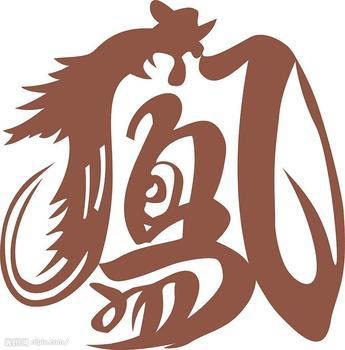
The character “凤” (fèng), though not found in oracle bone inscriptions, actually appeared very early. According to the ancient character dictionaries, the character is originally written as with the crooked neck of a bird on the upper part and the wings on the lower part, so it looks like a pictographic character. In ancient character dictionaries, the character is written as which is still a pictographic character though a “鸟” (niao, bird) is added to the archaic “凤”. In the small seal script, “凤” is written as with a “冠” (guān, hat) put on the “鸟” (niao, bird). In the regular script, the character is the same as in the small seal script. In simplified characters, the “鸟” in the character “凤” is simplified to a “又” (yòu, again). The shape of the character indicates that “凤” is something associated with bird. In fact, “凤” is a kind of mythical bird recognized as king of all birds in ancient Chinese legends. In the bygone days, the males were called “凤” while the females “凰” (huáng). It is said that the Chinese phoenix has “a rooster’s head, a swallow’s chin, a snake’s neck, a tortoise’s back and a fish’s tail” and wears a riot of colors. “凤” (fèng) may evolve from the ancient bird totem. According to the earliest records of “凤” (fèng) in the Book of History, after the successful regulation of flood by Yu the Great, a grand ceremony was held. Birds and beasts were singing and dancing at the ceremony, and the Chinese phoenix came in the end. “凤” (fèng) is regarded as a mythical bird that symbolizes auspiciousness. It is largely used to represent the emperors.




Why not rent a boyfriend, or girlfriend to please parents during the Spring Festival?